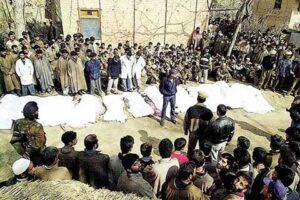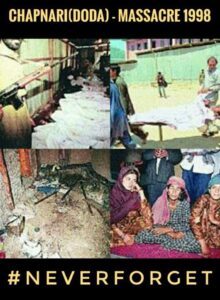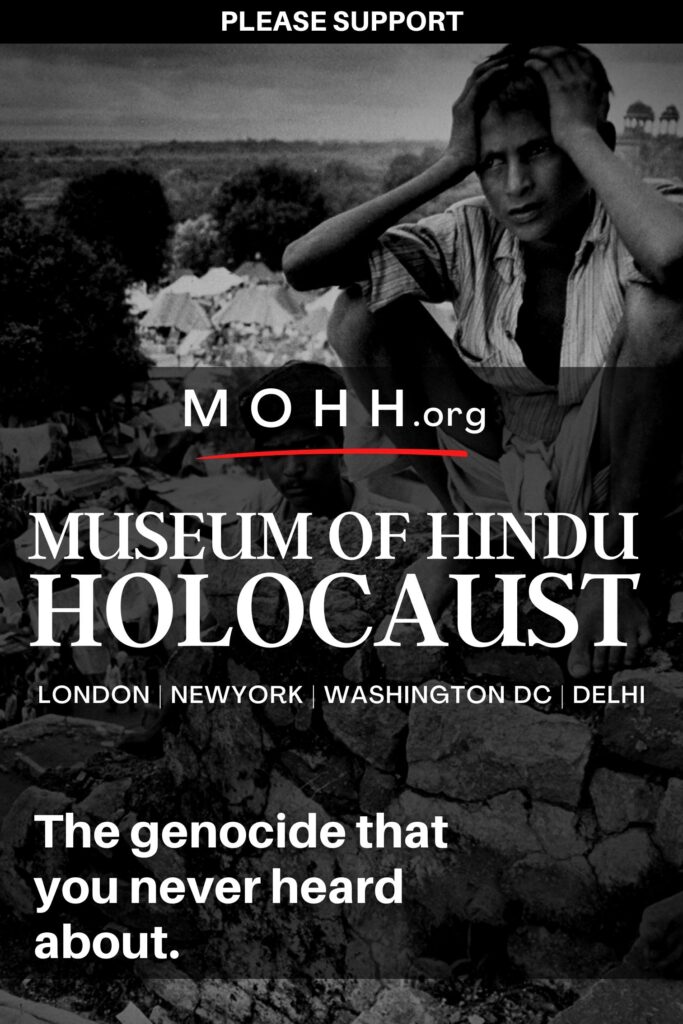[ Reported as seen ]
During the Chapnari massacre, a horrifying attack on two wedding parties took place, resulting in numerous casualties. While many innocent lives were lost, a few individuals managed to survive the brutality. Among the survivors were three primary school teachers and the bride herself, who endured the unimaginable terror. Their escape from the clutches of violence serves as a reminder of both the resilience of the human spirit and the profound impact that such tragic events can have on individuals and communities.
Introduction
The Chapnari massacre of 1998 remains a haunting chapter in the history of Jammu and Kashmir. Taking place on June 19th, this brutal incident unfolded in the small village of Chapnari, also known as Champanari in some accounts, located in the Doda district. It was a day marred by violence and terror, as a group of terrorists associated with Lashkar-e-Taiba and Hizbul Mujahideen unleashed a horrific attack on the Hindu villagers residing there.

The targeted assault resulted in the massacre of 25 innocent Hindu villagers, who fell victim to the merciless hands of the terrorists. The tranquility of the village was shattered as these extremists executed their malicious plans, leaving behind a trail of devastation and grief. The loss of lives included men, women, and children, as this heinous act spared no one.
The impact of the Chapnari massacre reverberated far beyond the confines of the village. The incident sent shockwaves through the region and ignited widespread condemnation. The ruthless brutality displayed by the terrorists not only robbed the victims of their lives but also struck fear into the hearts of countless others in the area. It served as a grim reminder of the ongoing turmoil and the constant threat posed by extremist groups in Jammu and Kashmir.
The Chapnari massacre stood as a stark testament to the prevailing volatility in the region and the grave challenges faced by the local population. It highlighted the need for enhanced security measures and a resolute response to combat terrorism. The incident further underscored the urgency to restore peace, stability, and a sense of security in the lives of the affected communities.
As time passed, the memories of that fateful day continued to haunt the survivors and the families of the victims. The scars left behind by the Chapnari massacre served as a painful reminder of the brutality inflicted upon innocent lives and the need for justice. The incident remains etched in the collective memory of the people, serving as a solemn reminder of the sacrifices made and the long road ahead in the pursuit of peace and harmony in the region.
Background
In the tumultuous backdrop of 1990, a significant exodus took place as a dark chapter unfolded in the Kashmir Valley. During this period, an estimated 500,000 to 600,000 Kashmiri Hindus, also known as Kashmiri Pandits, were compelled to flee their homes and ancestral land. This mass displacement was a result of the targeted persecution and violence unleashed upon them by militant groups operating in the region.
The Kashmiri Pandits, a minority community in Kashmir, found themselves caught in the crosshairs of the escalating insurgency and rising militancy. They became the primary targets of extremist elements who sought to drive them out of the valley, leading to a wave of forced displacement and a tragic disruption of their lives.
The selective targeting of Kashmiri Hindus was a deliberate strategy employed by the militants to instill fear, exert control, and eradicate their presence from the region. The Pandits faced threats, intimidation, and violent attacks, leaving them with no choice but to abandon their homes and seek refuge elsewhere for their safety and survival.
The exodus of such a substantial number of Kashmiri Hindus was a significant blow to the cultural and social fabric of the region. The departure of an entire community disrupted the centuries-old coexistence and harmony that had prevailed among different religious and ethnic groups in Kashmir.
The mass exodus had far-reaching consequences, both for the displaced Kashmiri Pandits and the overall dynamics of the Kashmir conflict. The forced displacement uprooted families, shattered lives, and created a deep sense of loss and trauma among the community members. They were forced to leave behind their homes, possessions, and a way of life that had been passed down through generations.
The events of 1990 marked a turning point in the history of Kashmir, leaving an indelible mark on the collective memory of the Kashmiri Pandit community. The exodus continues to be a painful and unresolved issue, representing the challenges faced by minority communities in conflict-ridden regions and the pressing need for sustained efforts to address their grievances and ensure their safe return and rehabilitation.
The background of the mass exodus of Kashmiri Hindus in 1990 serves as a somber reminder of the complex dynamics and human tragedy intertwined with the Kashmir conflict. It highlights the urgent need for dialogue, understanding, and collective efforts to foster reconciliation, harmony, and a peaceful coexistence among all communities in the region.
The massacre
In a heart-wrenching incident that unfolded on 19 June 1998, a gruesome massacre took place in the village of Chapnari, also known as Champanari, located in the Doda district of Jammu and Kashmir. As the village rejoiced in the festivities of two joyous marriage celebrations, a horrifying turn of events unfolded.
Terrorists affiliated with extremist organizations Lashkar-e-Taiba and Hizbul Mujahideen launched a merciless attack on the unsuspecting victims. The attackers targeted the members of the marriage parties, inflicting brutal violence upon them. The shocking act of savagery resulted in the tragic loss of 25 innocent Hindu villagers, who fell victim to the ruthless assault.
The victims, including men, women, and children, were caught off guard as they were accompanying the wedding processions. Amidst the chaos and terror, a small number of individuals miraculously survived the harrowing ordeal. Among the survivors were three primary school teachers and the bride herself, who managed to escape the onslaught.
The sheer brutality of the massacre shook the village to its core. Families were torn apart, and the community was left grappling with immense grief and despair. The lives lost on that fateful day represented a devastating blow to the fabric of the community and inflicted deep wounds that would forever haunt the survivors and the entire region.
The Chapnari massacre stands as a tragic testament to the grave consequences of extremism and violence that plagued the region during that period. It serves as a stark reminder of the innocent lives lost and the profound impact such acts of terror have on individuals, families, and communities.
The incident brought forth a renewed sense of urgency in addressing the scourge of terrorism and ensuring the safety and security of the people. It highlighted the need for collective efforts to combat the forces of hatred and extremism that aim to disrupt the social fabric and peaceful coexistence among different communities.
The memories of the Chapnari massacre continue to resonate within the hearts and minds of the survivors, their families, and the broader community. It serves as a solemn reminder of the relentless pursuit for peace, justice, and the preservation of human dignity. The tragic events of that day should compel us to work towards a future where such atrocities are never repeated, and every individual can live without fear, irrespective of their religion or background.
The aftermath
Following the horrific Chapnari massacre on 19 June 1998, the aftermath of the brutal attack left a profound impact on the region and drew strong reactions from political leaders and security forces.
Chief Minister Farooq Abdullah swiftly condemned the attack, denouncing it as yet another brutal act committed by Pakistan-sponsored militants in Jammu and Kashmir. His strong condemnation reflected the widespread outrage and condemnation felt by the local government and the broader community.

India’s Home Minister at the time, Lal Krishna Advani, who had recently assumed overall control of Indian policy in the state, expressed his deep concern over the massacre. Advani labeled the killing of the innocent wedding guests as a clear attempt at ethnic cleansing. He went on to assert that the responsibility for the attack, as well as the other massacres of Hindus, lay with Pakistan. This statement highlighted the prevailing belief that extremist groups operating from across the border were orchestrating such acts of violence.
In the months that followed, efforts were made to bring the perpetrators of the Chapnari massacre to justice. In September 1998, Abid Hussain, identified as the main suspect affiliated with Lashkar-e-Taiba, was killed in an encounter with Indian security forces. His death served as a small measure of justice for the victims and their families.
Another suspect, Attullah, associated with Hizbul Mujahideen, was apprehended by Indian security forces in June 2004. The arrest of Attullah represented a significant step towards holding those responsible accountable for their heinous actions. It signified the determination of the authorities to root out terrorism and ensure that those who perpetrate such acts of violence face the full force of the law.
The aftermath of the Chapnari massacre left a lasting impact on the community. The scars of the tragedy ran deep, as families mourned the loss of their loved ones and struggled to rebuild their lives in the wake of such devastation. The incident further heightened tensions and exacerbated the existing sense of fear and insecurity among the local population.
The swift and forceful response from political leaders and the efforts made by the security forces to apprehend the suspects demonstrated a commitment to combating terrorism and upholding justice. It also aimed to instill a sense of reassurance among the affected communities that their safety and well-being remained a priority.
While the arrests and encounters brought some measure of justice, the wounds inflicted by the Chapnari massacre were not easily healed. The tragic event serves as a stark reminder of the destructive impact of terrorism on innocent lives and the urgent need to address the root causes of such violence.
The memory of the Chapnari massacre continues to resonate in the collective consciousness of the affected community and stands as a reminder of the need for sustained efforts to prevent future acts of violence and foster a society where every individual can live without fear. It reinforces the resolve to uphold peace, security, and harmony in the region, aiming for a future where such senseless acts of brutality become nothing but distant memories.
Conclusion
The Chapnari massacre of 1998 stands as a haunting reminder of the devastating consequences of terrorism and the profound impact it has on communities and individuals. The aftermath of the massacre saw a strong condemnation from Chief Minister Farooq Abdullah and Home Minister Lal Krishna Advani, reflecting the outrage and determination to bring those responsible to justice.

The subsequent encounters and arrests of suspects associated with extremist groups provided a sense of closure and a small measure of justice for the victims and their families. However, the scars left by the tragedy continue to affect the community, as they grapple with the loss of loved ones and struggle to rebuild their lives amidst lingering fear and insecurity.
The response from political leaders and the security forces demonstrated a resolute commitment to combating terrorism and ensuring the safety and well-being of the affected communities. It sent a clear message that acts of violence aimed at ethnic cleansing would not be tolerated, and those responsible would face the consequences of their actions.
The Chapnari massacre serves as a stark reminder of the urgent need to address the root causes of terrorism and work towards lasting peace and harmony. It underscores the importance of fostering an environment where dialogue, understanding, and inclusivity prevail over hatred and violence.
As the memory of the tragedy lingers, it serves as a rallying cry for continued efforts to prevent future acts of terrorism and to create a society where every individual can live without fear. It highlights the significance of building resilient communities that stand united against extremism, while also addressing the underlying grievances that contribute to the cycle of violence.
Ultimately, the Chapnari massacre stands as a somber chapter in the history of Jammu and Kashmir, emphasizing the imperative of collective action to overcome the divisive forces that seek to tear communities apart. It is a call to honor the memory of the victims by striving for a future characterized by peace, justice, and coexistence. Through sustained efforts and a steadfast commitment to these principles, we can hope to prevent the recurrence of such tragic events and pave the way for a brighter and more secure future for all.
CITATIONS AND SOURCES
https://en.wikipedia.org/wiki/1998_Chapnari_massacre
https://www.outlookindia.com/magazine/story/slaughter-of-the-innocents/205772
https://dbpedia.org/page/1998_Chapnari_massacre
https://en.dharmapedia.net/wiki/1998_Chapnari_massacre


![The Chapnari massacre [Jammu and Kashmir, India]](https://www.projecthindukush.com/wp-content/uploads/download-1-14-400x400.jpg)
![The Chapnari massacre [Jammu and Kashmir, India]](https://www.projecthindukush.com/wp-content/uploads/download-27-400x400.jpg)
![The Chapnari massacre [Jammu and Kashmir, India]](https://www.projecthindukush.com/wp-content/uploads/E4OZoZiVgAIP9JW-400x400.jpg)
![The Chapnari massacre [Jammu and Kashmir, India]](https://www.projecthindukush.com/wp-content/uploads/ECUDwnPU8AAmcGy-400x400.jpg)
